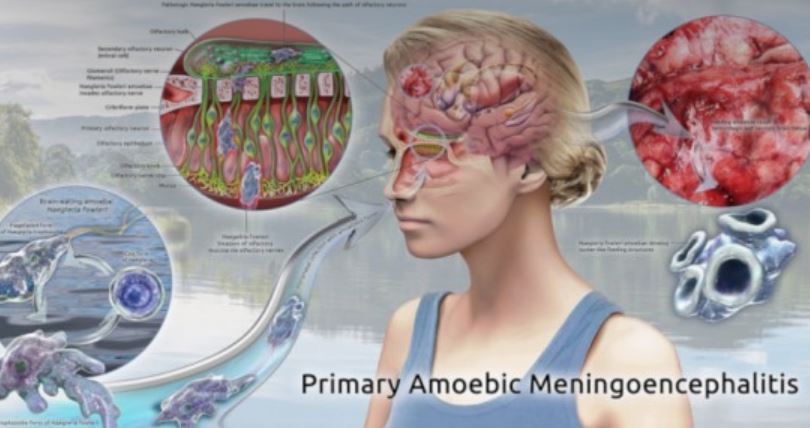A 14-year-old boy from Kozhikode, Kerala, tragically succumbed to amoebic meningoencephalitis on Wednesday, marking the third death from this rare brain infection in the state since May.
Amoebic Meningoencephalitis: A Deadly Foe
Amoebic meningoencephalitis, caused by a free-living amoeba found in contaminated water, is a devastating and often fatal brain infection. The young victim, EP Mridul, a Class 7 student, was diagnosed with the disease after experiencing vomiting and headaches.
A Tragic Chain of Events
Mridul’s passing follows the deaths of two other children in Malappuram and Kannur districts earlier this year, also due to amoebic meningoencephalitis. Health officials suspect Mridul contracted the infection after bathing in a local pond, prompting warnings for others who may have been exposed.
Understanding the Threat: Amoebic Meningoencephalitis
This rare but severe brain infection is primarily caused by the “Naegleria fowleri” amoeba, often called the “brain-eating amoeba.” This organism enters the body through the nose while swimming or diving in contaminated freshwater. Once inside, it travels to the brain, causing inflammation and destruction of brain tissue.
Symptoms and Swift Progression
Symptoms of amoebic meningoencephalitis typically appear within 1-9 days of exposure and include headache, fever, nausea, vomiting, stiff neck, seizures, altered mental state, and hallucinations. The disease progresses rapidly, often leading to death within days.
Public Health Warning
Health authorities in Kerala are urging residents to exercise caution and avoid swimming in potentially contaminated water sources. The disease is not transmitted from person to person, but the risk of infection from contaminated water remains a serious concern.
Key Takeaways:
| Key Point | Description |
|---|---|
| Amoebic meningoencephalitis is a rare but fatal brain infection. | It is caused by a free-living amoeba found in contaminated water. |
| The infection enters the body through the nose. | It travels to the brain, causing inflammation and destruction of brain tissue. |
| Symptoms include headache, fever, nausea, and vomiting. | It also includes stiff neck, seizures, altered mental state, and hallucinations. |
| The disease progresses rapidly and is often fatal. | Death usually occurs within days of symptom onset. |
| Health authorities are urging caution. | They advise against swimming in potentially contaminated water sources. |
Soumya Smruti Sahoo is a seasoned journalist with extensive experience in both international and Indian news writing. With a sharp analytical mind and a dedication to uncovering the truth, Soumya has built a reputation for delivering in-depth, well-researched articles that provide readers with a clear understanding of complex global and domestic issues. Her work reflects a deep commitment to journalistic integrity, making her a trusted source for accurate and insightful news coverage.



